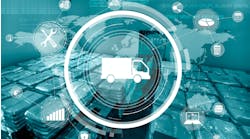INSIGHT Webinar Preview: Artificial intelligence and your smarter supply chain
On April 7, we connect with Industry 4.0 thought-leader Jeff Winter for the Spring INSIGHT webinar “Using AI To Not Only Optimize Your Supply Chain, But Transform Your Entire Value Chain.”
Today we preview that presentation with a quick chat about intelligent planning and using data to forecast supply chain challenges. Take a look…
Smart Industry: What do you mean by "intelligent planning"?
Jeff: Intelligent planning in supply chain refers to the use of advanced technologies, data-driven methodologies, and analytics to improve the efficiency, agility and responsiveness of supply-chain operations. It involves the integration of various supply-chain functions, such as demand forecasting, inventory management, production planning, and logistics, to optimize decision-making and resource allocation.
Smart Industry: You believe that one's digital transformation should extend beyond the bounds of the enterprise. How does the approach to digitalization differ between doing it internally and extending that strategy to supply-chain partners?
Jeff: Digital transformation should extend beyond the bounds of your enterprise because businesses today are deeply interconnected and interdependent. Including the entire-value chain as part of your digital-transformation strategy helps improve collaboration, boosts supply chain efficiency, enhances customer experience and increases agility.
Smart Industry: What kinds of data are most useful regarding supply-chain forecasting?
Jeff: In the past five years, demand forecasting has undergone several notable changes, driven primarily by technological advancements and evolving business environments. Traditionally companies were limited to just historical data and sales forecasts to develop their demand forecasts. But with the development and usage of advanced analytics, machine learning, integration of multiple data sources, and the focus on end-to-end supply chain visibility, lots of companies are starting to add real-time data from external sources.
Best-in-class companies will utilize external data such as market-research data, social media and web analytics, economic indicators, industry-specific data, and even weather data and geopolitical events. Combining these data sources with advanced analytics, machine learning, and artificial-intelligence techniques can significantly improve the accuracy and reliability of supply-chain forecasting, enhancing overall supply-chain performance.



